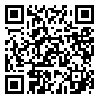BibTeX | RIS | EndNote | Medlars | ProCite | Reference Manager | RefWorks
Send citation to:
URL: http://jdisabilstud.org/article-1-2569-en.html
2- PhD Student in Health Psychology, Department of Health, Islamic Azad University, Karaj, Iran
3- PhD in Clinical Psychology, Department of Clinical Psychology and Health, Faculty of Educational Sciences and Psychology, Shahid Beheshti University, Tehran, Iran
Abstract
Background & Objectives: Extramarital affairs harm marriage and family, especially in conflicted relationships. Extramarital affairs have a lot of reasons, including personality characteristics. Dark personality tetrad, among the recent personality characteristics, encompasses 3 different components (Machiavellianism, Narcissism, and Psychopathy) that may overlap each other. Dark personality tetrad has been presented in many studies with different variables, including emotional intelligence. There is insufficient research about dark personality and emotional intelligence. Family stands out as the most essential unit of society, and understanding the reason for marital conflicts and extramarital affairs can help preserve family solidarity. This study was conducted to predict the tendency to extramarital relationships based on the dark personality tetrad and emotional intelligence in couples with marital conflict.
Methods: This research was a correlational study. The statistical population of this research consisted of all couples with marital conflicts living in Tehran City, Iran, who were referred to one of the psychology services clinics in 2019 to attend educational workshops. Individuals were selected by the convenience sampling method and answered the Marital Conflict Scale (Barati & Sanaee, 1999). Out of these individuals, 150 (75 couples) were recognized with marital conflicts, evidenced by scores higher than 114 on the marital conflict scale. Afterward, they answered the Emotional Intelligence Questionnaire (Siberia–Schering, 1996), the Dark Tetrad Personality Scale (Yousefi & Imanzad, 2018), and Tendency Toward Extramarital Affairs (Whatley, 2008). The inclusion criteria were desire and informed consent to participate in the research, being married, and obtaining a score of at least 114 on the Marital Conflict Scale (Barati & Sanaee, 1999). The exclusion criteria were non–cooperation, being divorced, incomplete filling out the questionnaires, and not obtaining the minimum score of the marital conflict scale. Data was described using descriptive statistics indicators (mean and standard deviation). The Pearson correlation coefficient and multiple linear regression were used for data analysis. The significance level of statistical tests was 0.01. Data analysis was done in SPSS version 22.
Results: Results showed that the tendency to extramarital affairs had a negative and significant relationship with emotional intelligence (p<0.001, r=–0.702). Also, the tendency to extramarital affairs showed a positive and significant relationship with the four dark personality traits: narcissism (r=0.858, p<0.001), sociopathy (r=0.669, p<0.001), Machiavellianism (r=0.651, p<0.001), and sadism (r=0.461, p<0.001). Also, machiavellian, psychopath, and sadism could not predict extramarital affairs (p>0.01). Still, emotional intelligence (p<0.001, β= –0.414) and narcissism in the four dark personality traits (p<0.001, β=0.574) could predict the tendency to extramarital affairs.
Conclusion: Based on the findings of the research, the tendency to extramarital affairs is predicted by emotional intelligence and the narcissistic component in the four dark personality traits.
| Rights and permissions | |
 |
This work is licensed under a Creative Commons Attribution-NonCommercial 4.0 International License. |



